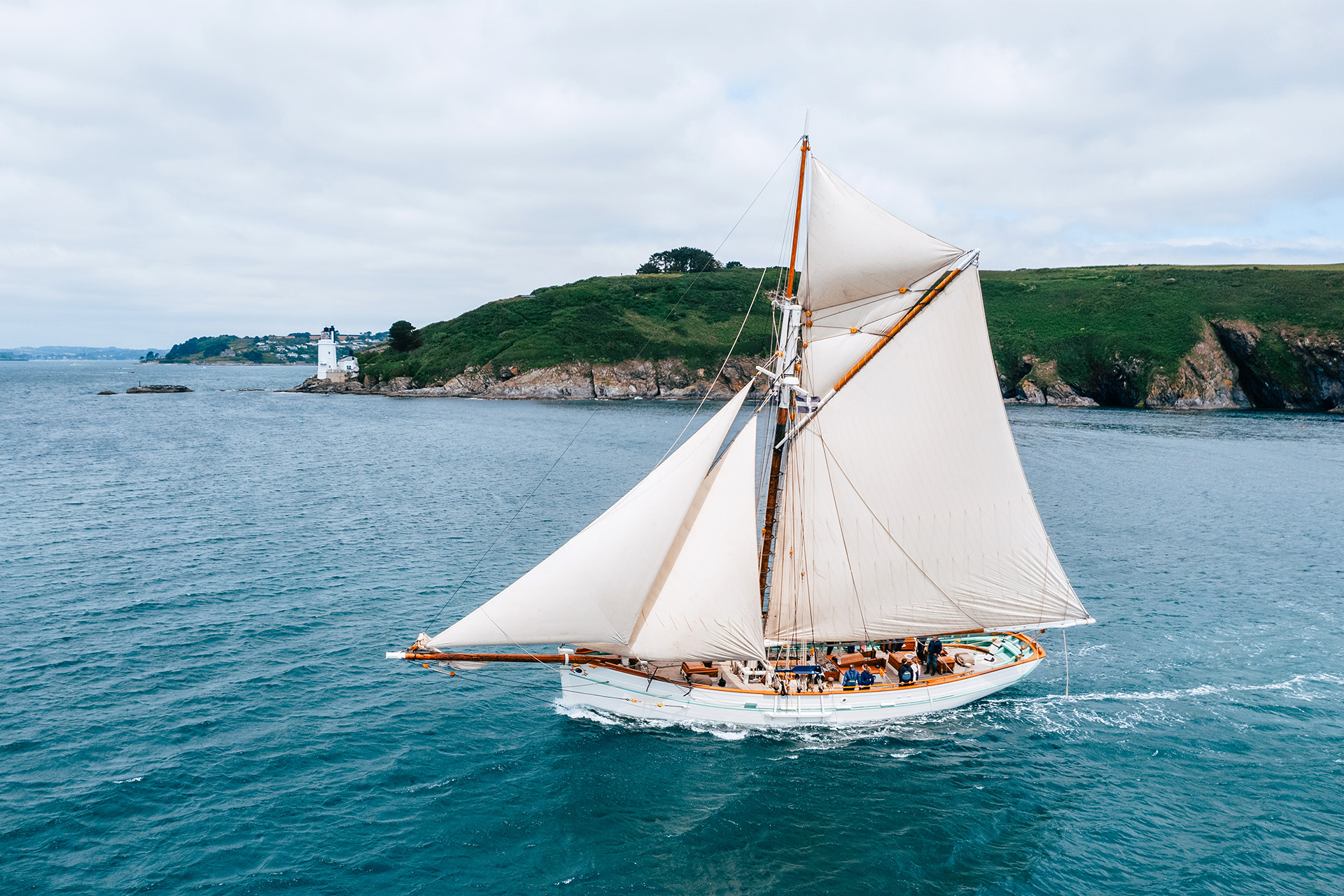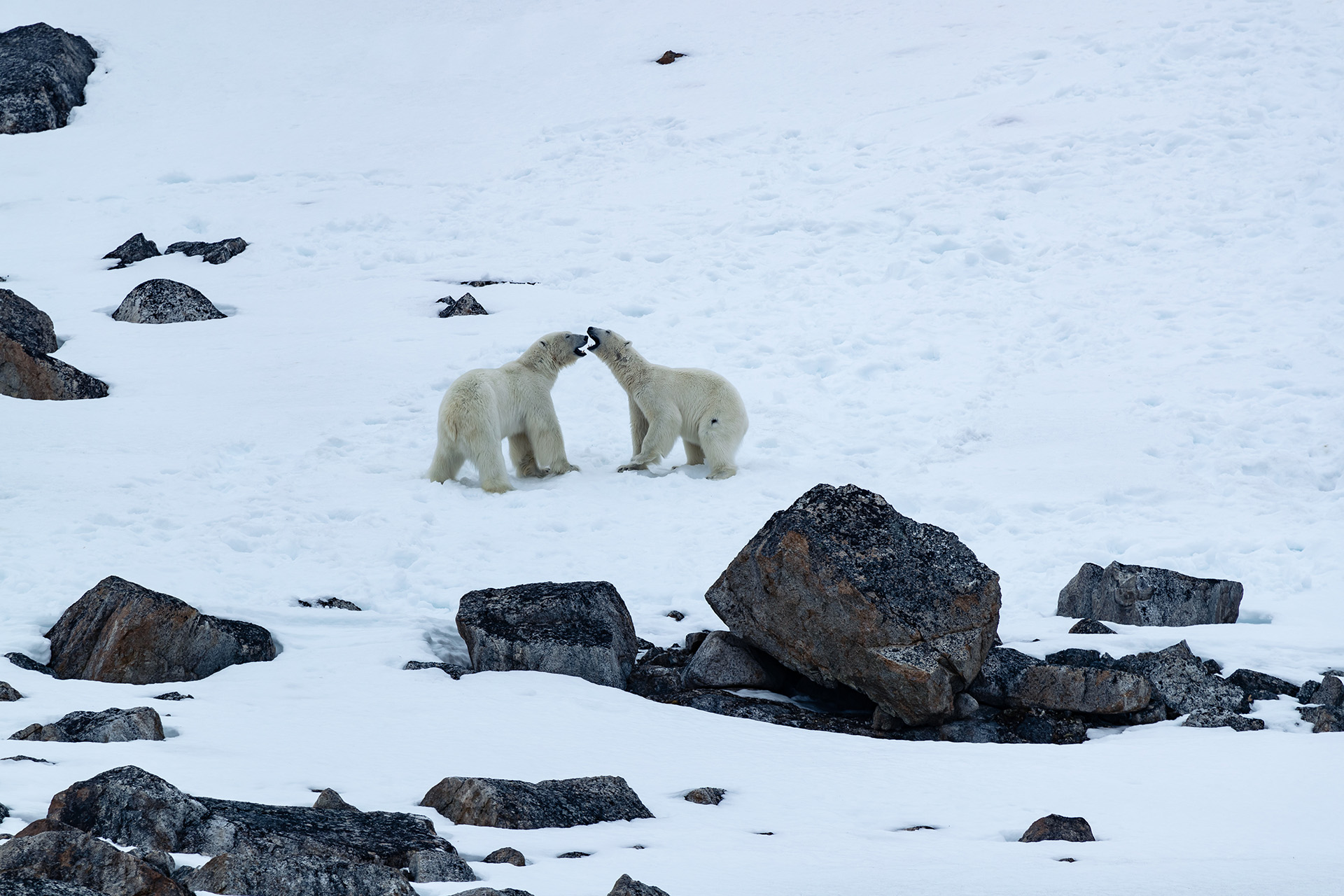
Svalbard, the remote Arctic archipelago, is often referred to as the ‘last wilderness on earth’. This is a place where wildlife thrives in one of the planet’s harshest environments. A sailing expedition offers unparalleled opportunities to witness some of the Arctic’s most iconic animals in their natural habitat. We’ve spent years sailing in Svalbard, and have been lucky enough to spot an abundance of wildlife along the way – so keep reading to discover our ultimate Svalbard Wildlife Guide!
Svalbard Wildlife: on Land
Arctic Fox
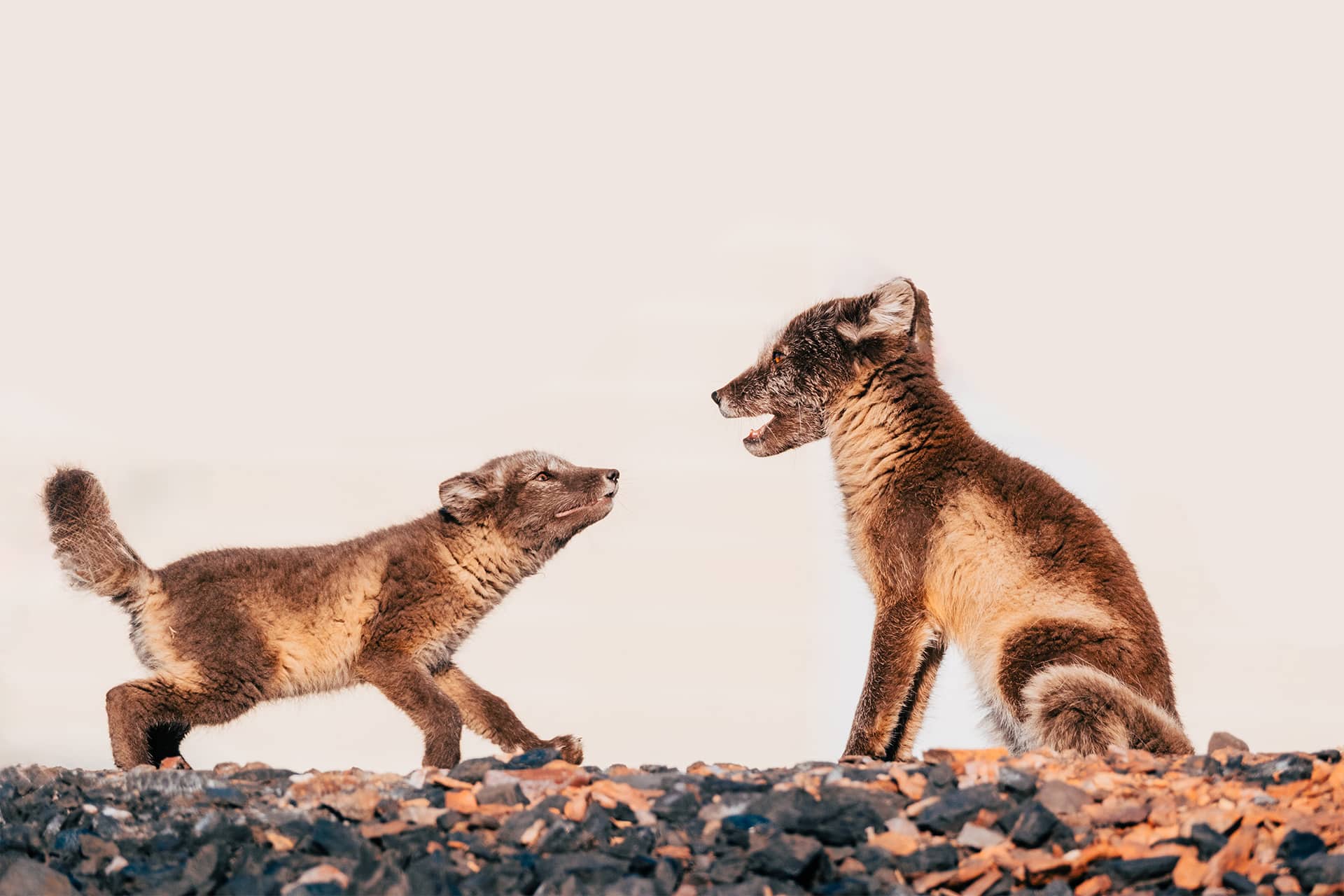
The Arctic fox is a true survivor of the Svalbard wilderness, remaining active even in the depths of winter. These small, resilient animals are a common sight along the coastlines, particularly near bird colonies where they hunt for food. Sailing along the coast provides a perfect vantage point to spot these foxes as they scavenge and hunt.
Walrus
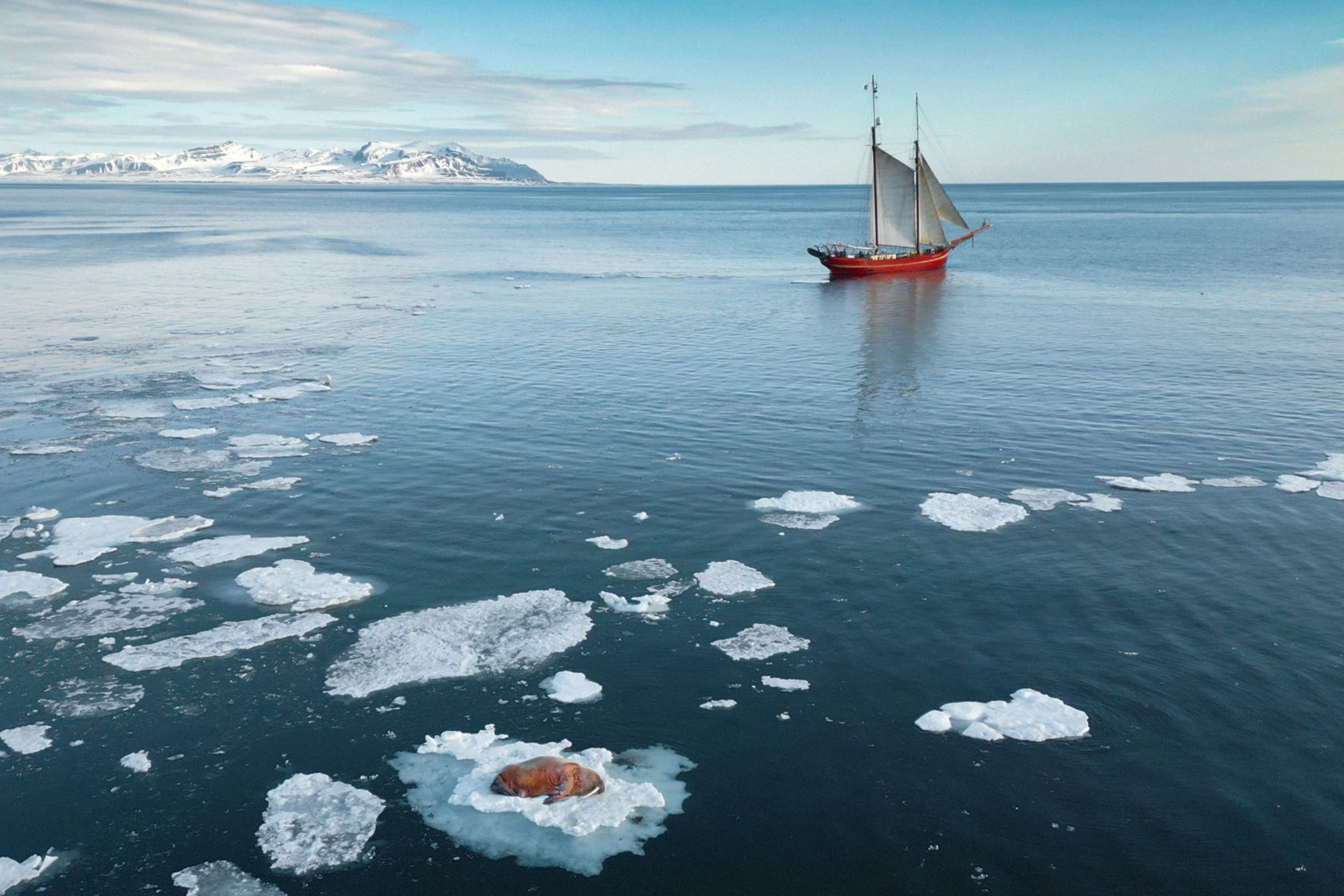
The walrus, with its long, curved tusks and social nature, is another highlight of a Svalbard wildlife adventure. Walruses are often seen resting in large groups on ice floes or along the coastline. Although once at risk of extinction, Svalbard’s walrus population is thriving, with thousands of these marine mammals now present.
Polar Bear

No visit to Svalbard is complete without the chance to see the “King of the Arctic.” With an estimated population of around 3,000 polar bears, these magnificent predators outnumber humans in the region. Polar bears are most commonly spotted in the northern and eastern parts of the archipelago, particularly in areas where sea ice remains throughout the summer. Sailing offers the safest and most respectful way to observe these powerful creatures from a distance, as boats can quietly approach the areas where they are often hunting seals on ice floes.

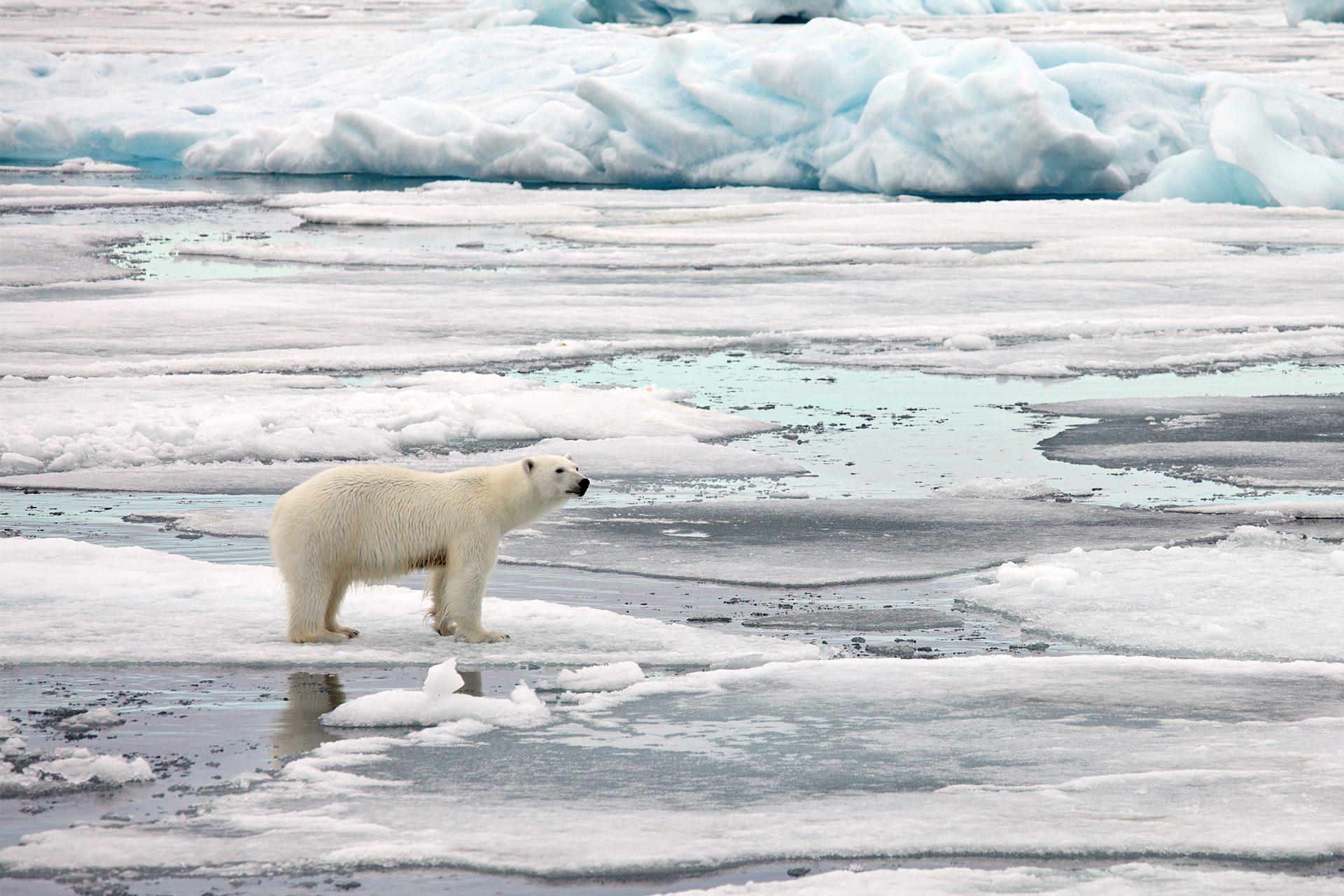
Operations manager Naomi recently visited Svalbard and was lucky enough to spot Polar bears whilst sailing with Noorderlicht. Here’s an excerpt from her experience: “Wildlife sightings in the Arctic are never guaranteed and none of us were under any illusion. On our last day, we were making our way back to an anchorage near Longyearbyen. The bell rang, a single time, so we all ambled up to the deck. A mother polar bear and two cubs were walking the shoreline, on the opposite side of the glacier from where we had walked that morning. We watched them for about 45 minutes, in and out of sight. An incredible moment was shared with a group of strangers who had become friends. Some cried, others hugged. No one could quite believe it.”
Svalbard Reindeer
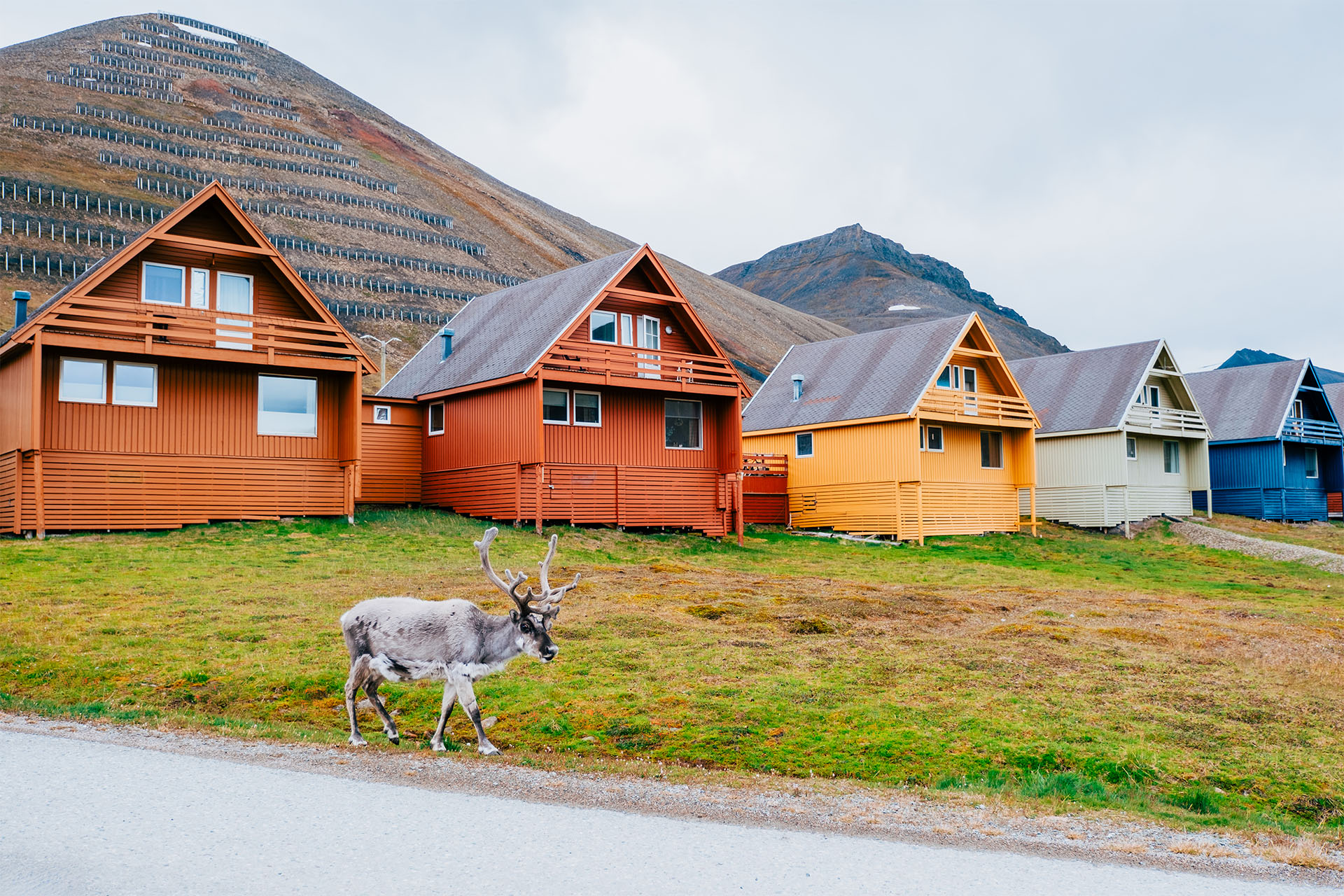
Unlike their mainland counterparts, Svalbard reindeer are a distinct subspecies that have adapted to the archipelago’s harsh conditions. These stocky, short-legged reindeer are frequently seen grazing close to settlements like Longyearbyen. Their lack of natural predators means they are relatively approachable, making for fantastic wildlife watching.
Svalbard Wildlife: at Sea
Bearded & Ringed Seal
Among the marine mammals, the bearded seal is one of the most common in Svalbard. Known for their distinctive whiskers, these seals love to lounge on ice floes or dive in shallow waters. Sailing in Svalbard’s fjords and along the drifting pack ice increases your chances of spotting these large seals, which are more elusive from land.
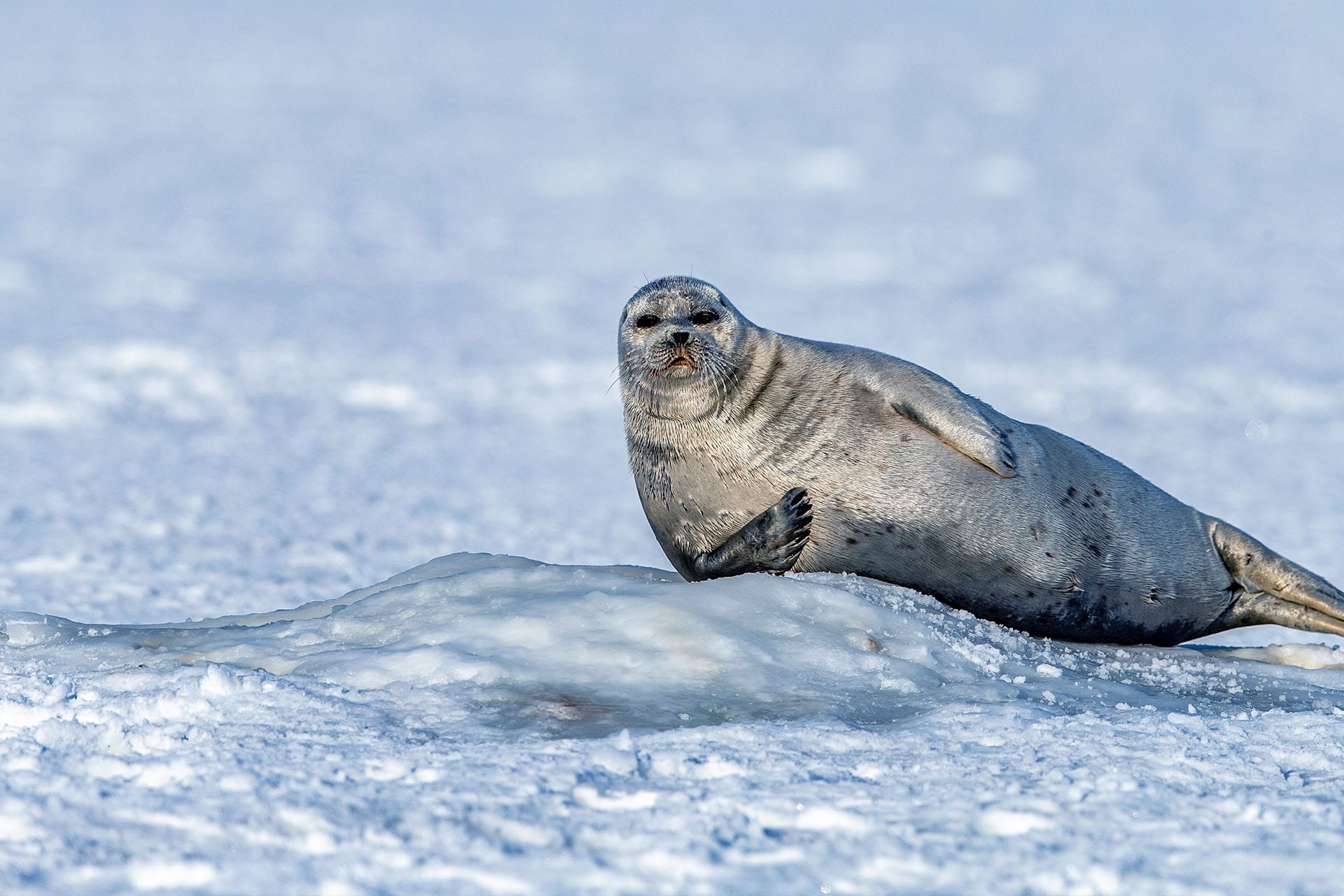
A vital part of the Arctic food chain and the polar bear’s favourite prey, the ringed seal is the most common seal in Svalbard. These small but tough seals are often seen around areas with heavy ice, which they depend on for breeding. Sailing provides an excellent opportunity to observe these seals in their natural environment, particularly in the more ice-bound regions, inaccessible by other means.
Beluga Whale
The ghostly white beluga whale is a magical sight in the coastal waters of Svalbard. These social creatures often travel in groups and are a common sight near glaciers, where food is abundant. The quiet approach of a sailing vessel allows for a serene encounter with these special creatures.
Humpback Whale

Humpback whales are a magnificent sight in Svalbard’s waters. Known for their acrobatic breaches and haunting songs, these giants of the sea are often found feeding in the nutrient-rich waters of the Arctic during the summer months.
Blue Whale
The blue whale, the largest animal on Earth, occasionally graces Svalbard’s waters. Seeing one of these enormous creatures in the wild is a rare and unforgettable experience. Sailing increases the likelihood of such a sighting, as these whales often live in deeper waters and remote areas that only smaller vessels can reach.
Narwhal
The elusive narwhal, often called the “unicorn of the sea” due to its long, spiraled tusk, is one of Svalbard’s most mysterious inhabitants. Although sightings are rare, they are possible, particularly in the fjords of Nordaustlandet.
Birds of Svalbard
Little Auk
The little auk is the smallest of the auks, but what it lacks in size, it makes up for in numbers! In summer, millions of these birds can be seen swarming around Svalbard’s cliffs and coastal waters. Sailing along these cliffs, you’ll witness the sheer spectacle of these tiny birds in flight, an experience that’s difficult to match on land.
Puffin
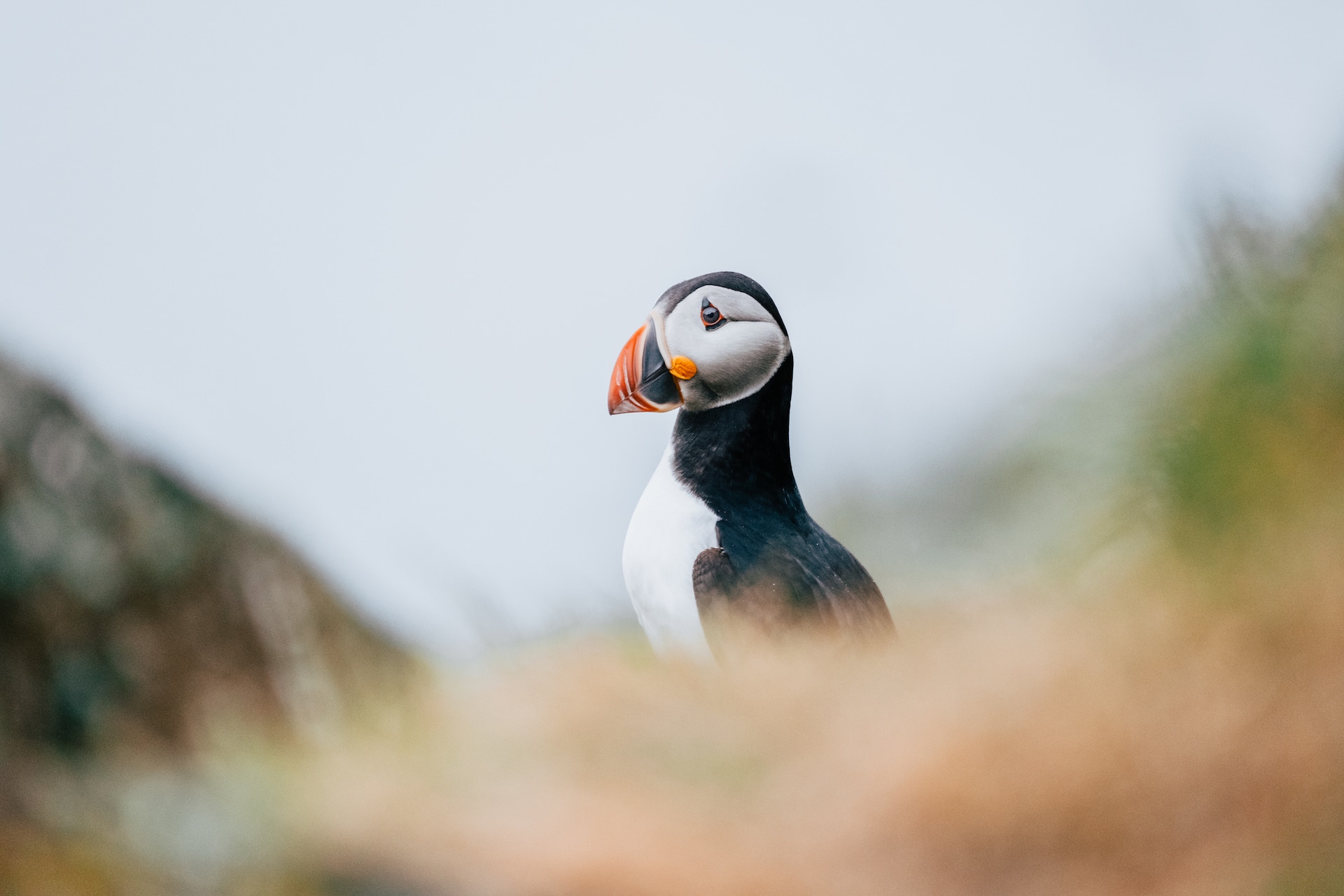
The Atlantic puffin, with its colorful beak and endearing appearance, is a favorite among birdwatchers. Svalbard is the northernmost home of this species, and while their numbers here are limited, they can still be seen nesting in coastal colonies. A sailing voyage provides access to these remote nesting sites, where puffins can be observed in their natural environment, away from the disturbances of larger vessels.
Barnacle Goose
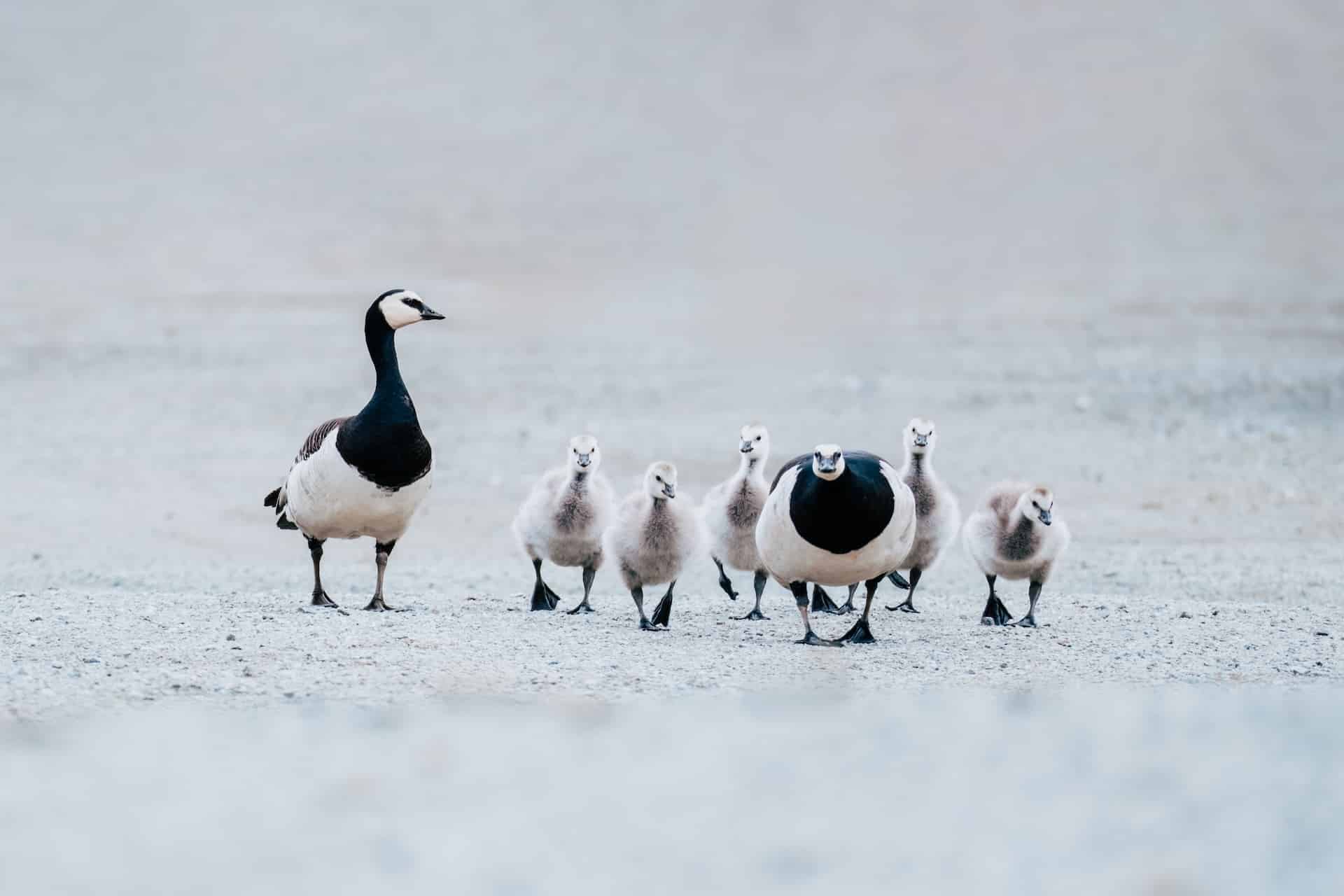
Each summer, thousands of barnacle geese arrive in Svalbard from mainland Europe. These birds are a conservation success story, having recovered from near extinction in the region. Sailing allows you to witness their nesting habits on high cliffs and the perilous journeys of their chicks as they make their way to the shore.
Svalbard Rock Ptarmigan
The Svalbard rock ptarmigan is the only bird that remains in the archipelago year-round. These hardy birds can be spotted across the islands, particularly during the spring and summer months. Sailing through Svalbard offers numerous opportunities to spot these birds in their natural habitat, often in remote and rugged areas.
Snow Bunting
The snow bunting, the only songbird in Svalbard, is a delight to see and hear. These small birds are often found in coastal areas during the summer, singing to attract mates. Sailing provides access to their preferred nesting sites on cliffs and rocky outcrops, where you can enjoy their melodic calls.
Arctic Tern
The Arctic tern’s incredible migratory journey takes it from the Antarctic to the Arctic each year. These birds are a common sight in Svalbard during the summer months, nesting on the ground in large colonies. Sailing close to these colonies allows for an intimate view of their nesting behavior and the dramatic defense displays they put on to protect their young.
Why Sailing is the Best Way to Explore Svalbard’s Wildlife
Sailing in Svalbard offers a unique and intimate way to experience the archipelago’s rich wildlife. Unlike larger cruise ships, smaller sailing vessels can navigate closer to shorelines, ice floes, and secluded fjords where many of these animals thrive. The ability to access remote and less-visited areas increases the chances of rare wildlife sightings and allows for a more immersive experience in this pristine wilderness. Plus, the quiet nature of sailing reduces disturbance to the wildlife, ensuring that these incredible creatures remain in their natural state, undisturbed by human presence.
For those looking to explore one of the last true wildernesses on Earth, our sailing expeditions in Svalbard offer the perfect blend of adventure, serenity, and extraordinary wildlife encounters.












